Thick Copper PCB
South-Electronic
Choose South-Electronic for unparalleled quality, dependability, and exceptional value in your PCB requirements. Experience the difference with our one-stop thick copper PCB service – from initial design to final assembly, we ensure precision, durability, and compliance with the highest industry standards.
Your Trusted Supplier of Thick Copper PCBs
Welcome to South-Electronic, where you’ll discover top-tier thick copper PCBs known for their excellent conductivity and thermal managemen.
Trust South-Electronic for exceptional quality and consistency in your electronic ventures. Our thick copper PCBs boost your devices’ functionality with superior electrical conductivity and heat dissipation. Partner with us for excellence and innovation in your field.
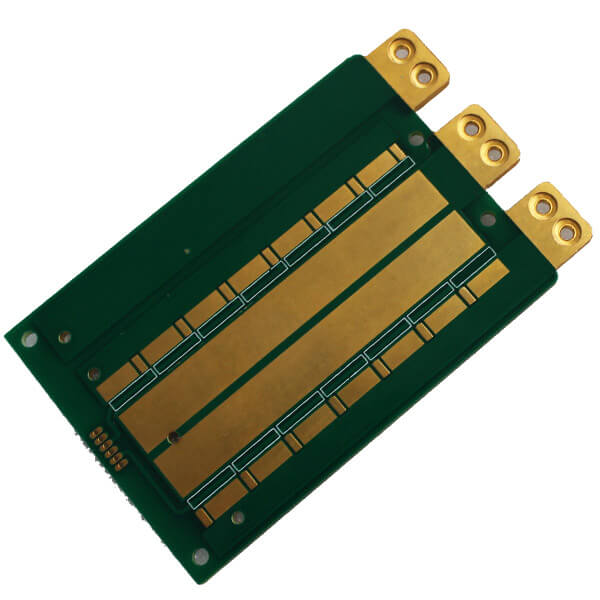
Standard Thick Copper PCB
It's got a copper thickness of 2 oz/ft² to 3 oz/ft², which means it's got the performance and conductivity you need to get the job done right.
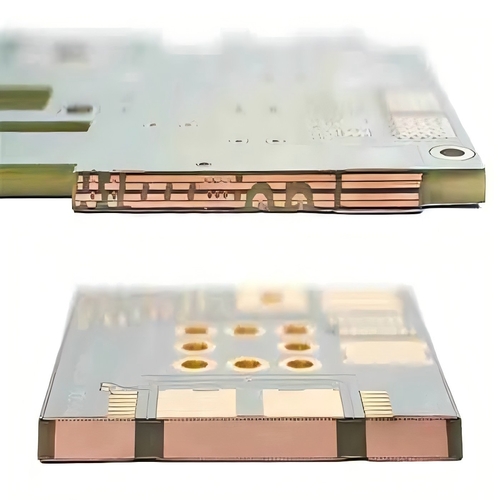
Thick Copper PCB
It's got a copper thickness from 4 oz/ft² to 20 oz/ft², which means it's built for high-power environments like industrial control and power systems. It's got the current capacity and heat management you need to keep things running smoothly.
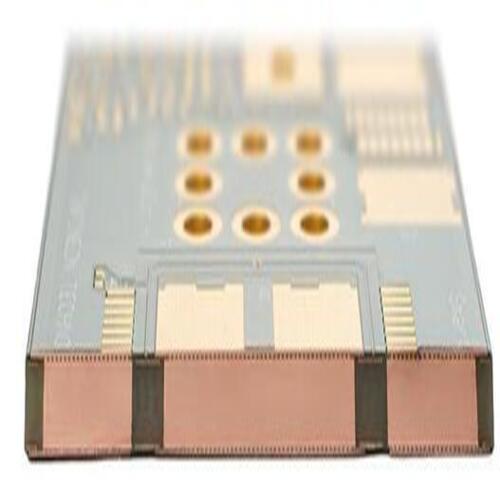
Extreme Thick Copper PCB
It's got a copper thickness over 20 oz/ft², which means it's designed for extreme applications like high-power distribution and thermal management.
Why Choose South-Electronic?
Go with South-Electronic. They know their stuff when it comes to Thick Copper PCBs. They’ll make it just the way you want it. xperience tailored service, rapid delivery, and guaranteed satisfaction with every order.
-
Flexibility in Ordering
Your Order, Customized Just for You.
We can handle any order size, from one PCB to a big batch. You get exactly what you need, made to your project's specs. No order is too small, and we pay attention to every detail. -
Experienced Team
You gain from our decade of industry expertise.
Leverage over a decade of industry expertise with a team that's as experienced as they are dedicated. We're here to help you navigate any PCB challenges with ease. -
Comprehensive Service
You get complete satisfaction with our wide range of equipment.
We have a wide range of PCB processing capabilities. From design to delivery, we have the equipment and processes to make sure your order is done right. -
Fast Delivery
You benefit from our quick and efficient production times.
We work fast to get your PCBs to you on time, every time. -
Guaranteed Satisfaction
You’re assured of quality and clear communication with our ISO9001 certification.
Your satisfaction is our priority, and we’re dedicated to exceeding your expectations with every order.
Related Project We had Done
Customer Reviews
Common Questions
Most Popular Questions
Send us a message
The more detailed you fill out, the faster we can move to the next step.
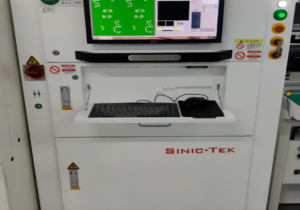
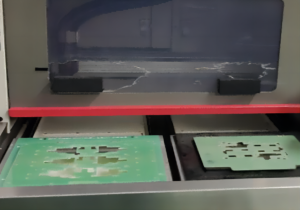
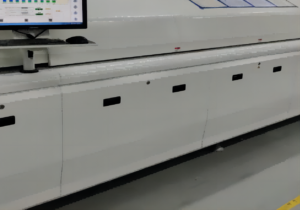
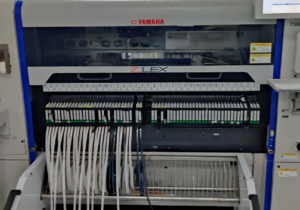
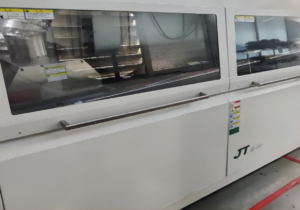
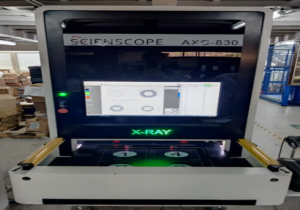

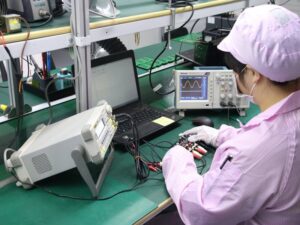

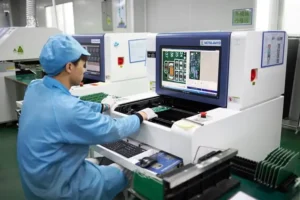



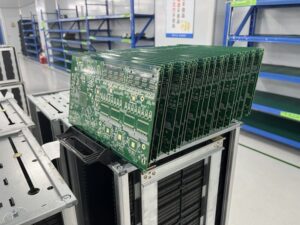

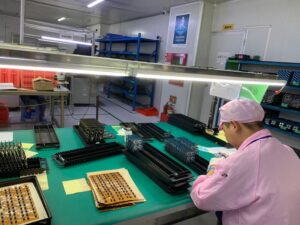
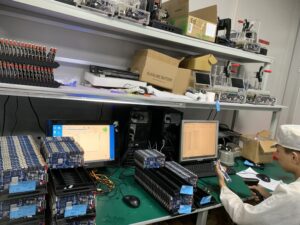


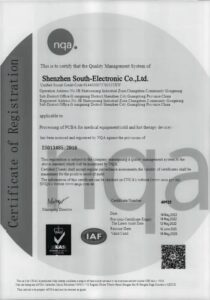
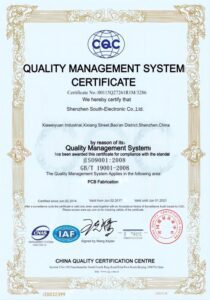
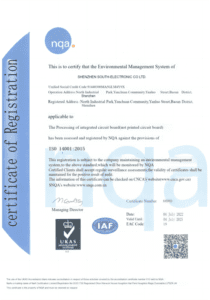






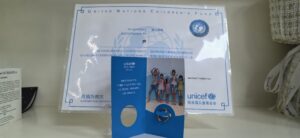

The Complete Guide For Thick Copper PCB
Contents
Chapter 1

Introduction to Thick Copper PCB
Thick Copper PCBs are printed circuit boards with copper layers that are much thicker than standard PCBs. The copper layers on Thick Copper PCBs can range from 105 µm (3 oz/ft²) to 400 µm (12 oz/ft²) or more. These PCBs are designed to handle high currents, handle high temperatures, and provide better mechanical strength. Thick Copper PCBs are used when standard PCBs would fail because of overheating, not enough current capacity, or wear and tear.
The thicker copper helps the board conduct electricity and dissipate heat better, which is important in high-power electronic applications like power supply systems, automotive electronics, and industrial machinery. Thick Copper PCBs are also important in applications where the board must perform well in harsh conditions, like renewable energy systems and military electronics.
Thick Copper PCBs are important in modern electronics. They perform better and last longer, especially in environments where devices are exposed to high temperatures, high currents, or constant shaking. This makes Thick Copper PCBs important in industries that need durable and high-performance boards, like telecommunications, aerospace, and electric vehicle manufacturing.
Chapter 2
Common Types of Thick Copper PCBs
Thick Copper PCBs are highly sought after in industries such as automotive, power electronics, telecommunications, and industrial machinery because they offer several distinct advantages. These boards are designed to handle higher power loads, improve heat dissipation, and offer greater durability compared to standard PCBs. Here are some of the key benefits:
1. Excellent Heat Dissipation
Thick Copper PCBs are able to dissipate heat more efficiently than standard PCBs. The thicker copper layers provide a larger surface area for heat transfer, allowing the board to handle higher thermal loads without overheating. This is especially important in applications like power supplies and electric vehicle chargers, where excessive heat can damage components and reduce the lifespan of the device. By using Thick Copper PCBs, manufacturers can ensure stable performance in high-temperature environments, enhancing the overall reliability of their products.
2. Enhanced Durability
Thick Copper PCBs are much more robust than standard PCBs. The thicker copper layers provide additional mechanical strength, making the board more resistant to thermal and physical stresses. This durability is especially important in environments where the PCB may be subjected to harsh conditions such as vibration, shock, or extreme temperatures. For example, Thick Copper PCBs are commonly used in industrial equipment and military-grade electronics, where reliability and longevity are crucial. They can endure repeated thermal cycling without developing cracks or other forms of damage, ensuring a longer operational life.
3. Higher Current-Carrying Capacity
Thick Copper PCBs can carry significantly higher currents compared to standard PCBs. The thicker copper layers allow for wider and thicker traces, which can carry more current without generating excessive heat. This makes Thick Copper PCBs ideal for high-power applications like power amplifiers, high-current converters, and electric motors. In contrast, standard PCBs with thinner copper layers would struggle to handle these high current loads, resulting in potential failure due to overheating or conductor burnout.
4. Compact Design with High Performance
Thick Copper PCBs allow designers to achieve higher performance in a more compact footprint. By integrating thicker copper layers, manufacturers can reduce the number of components or simplify the circuitry while still maintaining high power and thermal management. This is particularly useful in space-constrained applications, such as automotive electronics or medical devices, where maximizing performance while minimizing size is crucial.
5. Reliability in Extreme Conditions
Thick Copper PCBs are designed to perform well under extreme environmental conditions, such as high humidity, corrosive environments, or high-altitude operations. This makes them an excellent choice for aerospace and defense applications, where electronics are exposed to harsh elements. These boards can operate reliably in a wide range of temperatures and resist degradation over time, ensuring long-term performance and stability.
Comparison with Standard PCBs
While standard PCBs are sufficient for low-power, general-purpose applications, they fall short in high-power and high-performance scenarios. Standard PCBs typically have copper layers ranging from 1 oz/ft² to 3 oz/ft², limiting their current-carrying capacity and thermal performance. In contrast, Thick Copper PCBs can handle much higher currents and dissipate heat more effectively, making them a far better option for applications with stringent power and reliability requirements.
Moreover, standard PCBs are more prone to damage from thermal cycling, mechanical stress, and exposure to extreme environments. Thick Copper PCBs, with their enhanced durability and mechanical strength, provide a more reliable solution for critical applications where downtime or failure is not an option.
In summary, Thick Copper PCBs offer significant benefits in terms of heat dissipation, durability, current capacity, and reliability, making them an ideal choice for high-power applications that demand superior performance and longevity.
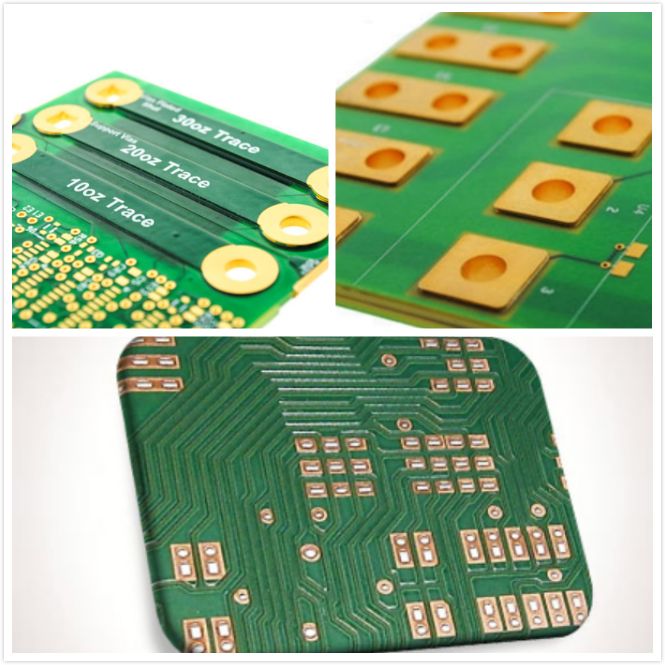
Chapter 3
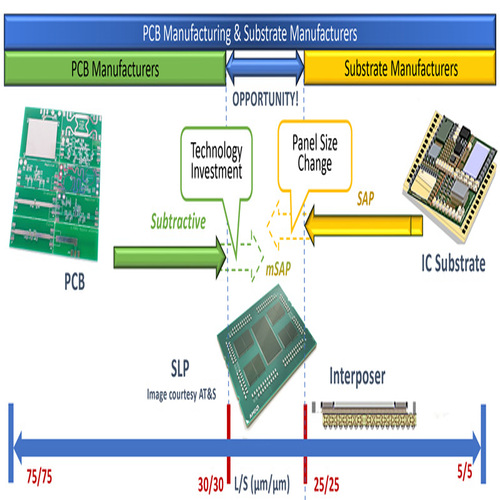
Design Considerations for Thick Copper PCB
When designing PCBs with thick copper, typically defined as copper weights exceeding 2 oz/ft², several important considerations must be addressed to ensure optimal performance and reliability:
Thermal Management: Thick copper layers improve heat dissipation, making them suitable for high-power applications. However, careful thermal analysis is required to avoid hotspots. Consider thermal vias and proper pad sizes to enhance heat transfer.
Mechanical Stress: Thicker copper can lead to increased mechanical stress during manufacturing and operation. Ensure that the PCB design accommodates potential flexing and thermal expansion, which may require the use of reinforced materials.
Trace Width Calculations: With thicker copper, trace widths can be narrower for the same current-carrying capacity compared to standard copper weights. Utilize IPC-2221 or similar standards for accurate trace width calculations to prevent overheating.
Manufacturing Constraints: Verify with the PCB manufacturer regarding their capabilities for thick copper processing, including etching, plating, and drilling. Not all manufacturers can handle thick copper effectively.
Layer Stack-up: Consider the overall stack-up of the PCB, ensuring that the thicker copper layers do not affect impedance control or signal integrity, especially in high-speed designs.
Via Design: For thick copper PCBs, design vias to support current flow efficiently. Consider using microvias or larger via sizes to ensure good electrical connection and thermal conduction.
Soldering Techniques: The increased thermal mass of thick copper may require adjustments in soldering processes. Consider using reflow techniques suitable for higher thermal loads and ensure that solder mask adhesion is adequately managed.
Electrical Performance: Assess the impact of thick copper on the electrical performance of the PCB, including resistance, inductance, and capacitance. Simulations may be necessary to predict performance in high-frequency applications.
Cost Considerations: Thicker copper PCBs can increase material and manufacturing costs. Evaluate the cost-benefit ratio against performance requirements to determine the necessity of thick copper for your application.
Design Tools and Simulation: Utilize advanced PCB design tools that support thick copper designs, and run simulations for thermal, electrical, and mechanical performance to validate your design choices.
Chapter 4
Thick Copper PCB Applications
Thick Copper PCBs are used in industries that require high power handling, improved heat dissipation, and increased durability. They are essential for a variety of sectors, including automotive, power electronics, industrial equipment, and more. Here are some specific industries and applications where Thick Copper PCBs are critical.
1. Automotive
Thick Copper PCBs are crucial in the automotive industry, especially for electric vehicles (EVs) and hybrid vehicles. They are used in various components, including:
Powertrain control systems: Thick Copper PCBs efficiently manage power in electric motors and control units.
Battery management systems (BMS): Thick Copper PCBs can handle high currents and manage thermal loads, making them ideal for BMS in EVs.
LED lighting systems: Thick Copper PCBs dissipate heat, ensuring the longevity and performance of automotive LED systems.
Charging stations: Thick Copper PCBs handle high currents in EV charging systems, providing reliable and fast charging without overheating.
2. Power Electronics
Thick Copper PCBs are essential in power electronics, where high power handling and efficient heat management are necessary. They are used in applications such as:
Power supplies and converters: Thick Copper PCBs are commonly used in power supply units (PSUs), inverters, and DC-DC converters due to their ability to handle high current loads and dissipate heat effectively.
Renewable energy systems: Thick Copper PCBs help manage the large amounts of current generated in solar power inverters and wind energy converters, ensuring efficient power distribution.
Uninterruptible Power Supplies (UPS): Thick Copper PCBs handle high currents during power backup operations, maintaining stability and reliability.
3. Industrial Equipment
Thick Copper PCBs are used in industrial machinery to meet power control demands, durability requirements, and reliable operation in extreme conditions. Some specific applications include:
Heavy-duty motor controllers: Industrial motors require Thick Copper PCBs to control large current flows and prevent overheating during operation.
Power distribution systems: Thick Copper PCBs are used in power distribution panels in industrial settings to safely and reliably manage high currents.
Robotics and automation: Thick Copper PCBs handle the power required for complex, high-performance operations in industrial robots.
4. Telecommunications
Thick Copper PCBs are beneficial in telecommunications applications that require high power and reliability, such as:
Cell towers and base stations: Thick Copper PCBs manage the power needed to transmit signals over long distances, ensuring consistent performance and minimizing energy loss.
High-frequency transmission devices: Thick Copper PCBs maintain signal integrity and handle high power loads in telecom equipment transmitting large amounts of data over significant distances.
5. Aerospace and Defense
Thick Copper PCBs are used in aerospace and military applications because they can withstand harsh environments and perform reliably under extreme conditions:
Avionics systems: Thick Copper PCBs are used in aircraft control and navigation systems, where reliability and heat management are crucial.
Military-grade power supplies: Thick Copper PCBs handle high currents and withstand extreme temperatures and mechanical vibrations in military power supplies.
Satellite communication systems: Thick Copper PCBs are used for power distribution and communication control in satellites, where durability and efficiency are essential.
6. Renewable Energy
Thick Copper PCBs are vital in the renewable energy sector, where systems need to convert and distribute high levels of power efficiently:
Solar power inverters: Thick Copper PCBs manage the large current loads generated by solar panels, ensuring efficient power conversion and distribution.
Wind turbine controllers: Thick Copper PCBs are ideal for wind energy system controllers, where stability and durability are crucial.
7. Medical Devices
Thick Copper PCBs are used in high-power medical devices that require stable power delivery, such as:
Imaging systems: Thick Copper PCBs handle high-power currents in devices like X-ray machines, MRI scanners, and CT scanners, ensuring reliable imaging.
Patient monitoring systems: Thick Copper PCBs distribute power efficiently, ensuring uninterrupted operation for patient safety.
Conclusion
Thick Copper PCBs are essential in high-power and high-performance applications across multiple industries. They are critical for electric vehicles, power supplies, industrial equipment, telecommunications, aerospace and defense, renewable energy, and medical devices. The ability of Thick Copper PCBs to handle high currents, dissipate heat, and withstand extreme conditions makes them the preferred choice for applications that require performance and reliability.

Chapter 5
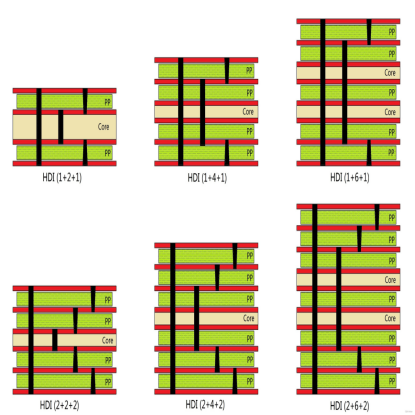
Benefits of Using Thick Copper PCBs
Thick Copper PCBs are the way to go when you need a high-performance, high-power board for a variety of industries. They offer advantages that go beyond what you get with standard PCBs, and they’re the best choice for industries where heat dissipation, current-carrying capacity, and durability are critical. Here are some of the benefits of using Thick Copper PCBs:
1. They dissipate heat better.
One of the big benefits of Thick Copper PCBs is that they’re great at dissipating heat. With thicker copper layers, heat generated by high-current components can spread out across the board more effectively. That makes Thick Copper PCBs perfect for power supplies, LED lighting, and automotive electronics, where overheating can kill performance and lifespan. By managing heat well, these PCBs help prevent component failure and keep things running smoothly even when you’re pushing a lot of power.
2. They’re more durable.
Thick Copper PCBs are naturally more durable than standard PCBs because they have thicker copper layers. That extra thickness makes the board more resistant to thermal stress, mechanical wear, and environmental factors. In industries like automotive, aerospace, and industrial equipment, where devices have to deal with extreme temperatures, vibrations, and mechanical stress, Thick Copper PCBs will last longer and perform better. Standard PCBs with thinner copper layers are more likely to get damaged in these tough environments.
3. They can carry more current.
Another big advantage of Thick Copper PCBs is that they can handle higher currents. The thicker copper traces can carry bigger loads without overheating, which is critical in applications like power electronics, electric vehicle charging systems, and high-power motor controllers. Standard PCBs with thinner copper layers would struggle with those high currents, leading to overheating and circuit failure. By using Thick Copper PCBs, you can design systems with higher power densities while still being safe and efficient.
4. They let you design smaller, denser systems.
Thick Copper PCBs let you design smaller devices while still handling high power loads. With these PCBs, you can make your devices smaller without sacrificing performance. That’s especially important in applications like consumer electronics, medical devices, and telecommunications equipment, where you need high power density in a small space. Standard PCBs might need bigger or more complex layouts to manage the same power, so Thick Copper PCBs are more efficient.
5. They’re more reliable in harsh environments.
For industries where electronic components have to deal with harsh environments—like high humidity, extreme temperatures, or mechanical stress—Thick Copper PCBs are more reliable. They’re less likely to fail because of corrosion, oxidation, or physical damage, so they’re perfect for aerospace, military, and industrial automation applications. They’re built to handle tough conditions and keep performing well for a long time.
How Thick Copper PCBs Compare to Standard PCBs
Standard PCBs are fine for low-power, less demanding applications, but they don’t cut it when you need high power and high performance. The main difference between standard and Thick Copper PCBs is the thickness of the copper layers. Standard PCBs usually have copper layers between 1 oz/ft² and 3 oz/ft², while Thick Copper PCBs can have copper layers from 4 oz/ft² to 12 oz/ft² or more.
The Key Differences Between Thick Copper PCBs and Standard PCBs:
- Current capacity: Thick Copper PCBs can handle way more current than standard PCBs. That makes them the better choice for power-hungry applications, while standard PCBs might overheat and fail under the same conditions.
- Heat dissipation: Thick Copper PCBs are great at getting rid of heat because they have more copper. Standard PCBs with thinner copper layers have a hard time managing heat, especially in high-power applications.
- Durability: Thick Copper PCBs are way more durable and better at handling environmental stress, so they’re perfect for harsh conditions. Standard PCBs are fine for less demanding applications, but they’re more likely to fail in extreme environments.
- Size efficiency: Thick Copper PCBs can handle high power in a small design, so they’re great for applications where you need a small footprint but high performance. Standard PCBs might need bigger designs or more components to do the same power.
Conclusion
Thick Copper PCBs are the way to go when you need high power, great thermal management, and durability in tough environments. Whether you’re designing for automotive electronics, power supplies, or industrial equipment, Thick Copper PCBs give you reliability, efficiency, and long-term performance.
Chapter 6
How to Choose the Right Copper Thickness for Your Project?
When it comes to choosing the right copper thickness for your PCB project, it’s all about performance, durability, and safety. The thickness of the copper layer affects how much current the board can carry, how well it dissipates heat, and how reliable it is. To choose the right copper thickness, you need to think about what your application needs in terms of power handling, thermal management, and the environment it will be in. Here’s a guide to help you pick the right copper thickness for your project.
1. Understand How Copper Thickness is Measured
Copper thickness in PCBs is measured in ounces per square foot (oz/ft²), which tells you how much copper is on a square foot of the board’s surface. The standard copper thicknesses are:
- 1 oz/ft² = 35 micrometers (µm)
- 2 oz/ft² = 70 micrometers (µm)
- 3 oz/ft² = 105 micrometers (µm)
For Thick Copper PCBs, the copper layers can range from 4 oz/ft² (140 µm) to 12 oz/ft² (400 µm) or more, depending on how much power and current the application needs.
2. Think About Power Requirements
The first thing to do when choosing the right copper thickness is to figure out how much power your circuit needs. If you have a lot of power going through the board, you need thicker copper layers to handle the current without getting too hot or damaging the PCB. For example:
Low-power applications (like consumer electronics) can use standard 1 oz or 2 oz copper thickness.
Medium-power applications (like motor controllers or LED lighting) usually need 2 oz to 3 oz copper thickness to work reliably.
High-power applications (like power supplies, electric vehicle chargers, or industrial control systems) need 4 oz or higher copper thickness to handle the high currents safely and efficiently.
The thicker the copper, the more current it can carry without getting too hot or failing.
3. Consider Thermal Management Needs
Copper thickness is also important for heat dissipation, especially when you have high currents. If you have a lot of current going through the board, it can generate a lot of heat. Thicker copper layers can spread the heat out better across the PCB, which reduces the risk of overheating and improves the overall thermal performance of the circuit. This is especially important for applications like power electronics, automotive systems, and renewable energy systems, where you need to manage heat to keep the system stable and safe.
If your application generates a lot of heat, like power conversion or industrial control systems, you should think about using 4 oz or higher copper thickness to improve the thermal performance and reliability.
4. Think About the Size and Complexity of the PCB Design
Thicker copper layers let you make more compact designs because you can have wider and thicker traces to carry high currents without making the board bigger. If you have a project with a lot of complex circuitry in a small space, like automotive electronics or telecommunications equipment, thicker copper can help you get the layout you want without sacrificing performance. But remember that as copper thickness goes up, it can affect how easy and how much it costs to make the PCB. You need to balance how complex the design is with how much space and money you have.
5. Account for the Environment
The environment your PCB will be in also affects what copper thickness you should use. If your application will be in tough conditions, like high humidity, corrosive chemicals, or extreme temperatures, thicker copper can help the board resist those things. Industries like aerospace, defense, and industrial automation often use thicker copper layers because it makes the PCB more durable and last longer.
6. Follow Industry Standards and Guidelines
Some industries have standards and guidelines that say what copper thickness you need. For example, in power electronics, there might be rules that say you have to have a certain minimum copper thickness to be safe and meet the industry’s standards. You should look at these guidelines when you design your PCB to make sure it meets the right specifications for your industry.
7. Talk to Your PCB Manufacturer
Once you know what your project needs in terms of power, thermal, design, and environment, it’s a good idea to talk to your PCB manufacturer to make sure the copper thickness you want is going to work. They can tell you about how easy or hard it is to make the PCB with thicker copper layers and how much it will cost. They can also tell you about the best design practices to make sure your PCB works the way you want it to.
Conclusion
Choosing the right copper thickness is all about balancing power requirements, heat management, design complexity, and the environment. Thicker copper layers are important when you need to carry a lot of current and have good thermal performance. But they also cost more and can be harder to make. By understanding what your project needs and talking to your PCB manufacturer, you can make a good choice that makes your PCB work great in your application.

Chapter 7

Cost Factors for Thick Copper PCBs
The cost of manufacturing Thick Copper PCBs can vary significantly depending on several factors, including copper thickness, design complexity, and production volume. Understanding these factors can help you make informed decisions to balance performance and cost, ensuring you get the most value from your PCB project. Below is a breakdown of the key cost drivers and tips for optimizing your design to minimize expenses without compromising on quality.
1. Copper Thickness
The most direct cost driver for Thick Copper PCBs is the thickness of the copper layer itself. The thicker the copper, the more material is required, leading to higher material costs. For example:
Standard PCBs with 1 oz/ft² copper are less expensive because they use less copper.
Thick Copper PCBs with 4 oz/ft² or more significantly increase material costs due to the additional copper needed.
Additionally, the manufacturing process for Thick Copper PCBs is more complex, requiring additional steps such as enhanced etching and plating to handle the thicker copper. This also contributes to higher production costs. The choice of copper thickness should be aligned with the application’s current and thermal requirements to avoid unnecessary expenses.
2. Design Complexity
Design complexity is another major cost factor in Thick Copper PCB production. Complex designs with intricate routing, multiple layers, or fine pitch components require more time and resources for manufacturing. Some key aspects that can increase costs include:
Multilayer PCBs: While a single-layer Thick Copper PCB is less expensive to produce, multilayer boards are necessary for more complex applications, and the number of layers directly impacts the price.
Fine-pitch components: PCBs with very small components and tight spacing require more precise manufacturing processes, increasing labor and equipment costs.
Vias and plating: Designs that require multiple via types (such as blind, buried, or microvias) also add to the complexity and cost of production.
To reduce costs, it’s essential to simplify the design where possible, minimizing unnecessary layers or features that don’t add value to the final product.
3. Production Volume
Production volume plays a crucial role in determining the cost per unit of Thick Copper PCBs. As with most manufacturing processes, larger production runs tend to result in lower per-unit costs due to economies of scale. PCB manufacturers often offer discounts for bulk orders because they can spread setup and production costs over a larger number of units.
For smaller production volumes, such as prototypes or low-quantity runs, the per-unit cost is significantly higher because the setup costs remain constant, regardless of the number of boards being produced. If possible, consolidating orders or planning for larger production volumes can help reduce costs.
4. Specialized Materials
In some applications, specialized materials may be needed to complement the thicker copper layers, such as high-temperature substrates or advanced insulation materials. These materials can add to the overall cost of the PCB. For example, substrates like FR4 may be sufficient for standard applications, but high-temperature materials such as polyimide or ceramic may be required for more demanding environments, further increasing the cost.
5. Manufacturing Process
The complexity of the manufacturing process also influences cost. Thicker copper layers require more precise etching and plating processes, which may involve longer processing times and more advanced equipment. Additionally, some manufacturers may use specialized techniques, such as sequential lamination or multiple plating cycles, to produce high-quality Thick Copper PCBs. These advanced processes contribute to higher production costs compared to standard PCBs.
Tips for Optimizing Design to Balance Performance and Cost
1. Right-Size Your Copper Thickness
While it might be tempting to use the thickest copper possible for increased durability and current capacity, this approach can lead to unnecessary cost increases. Carefully evaluate the power and thermal requirements of your application to select the optimal copper thickness. For example, if your design only requires 4 oz/ft² copper to function reliably, using 6 oz/ft² copper would increase costs without providing additional benefits.
2. Simplify the PCB Layout
Wherever possible, aim to simplify the layout of your PCB. Reducing the number of layers, minimizing the use of special via types, and eliminating non-essential features can significantly reduce manufacturing costs. Collaborate with your design team to identify areas where the design can be streamlined without sacrificing functionality.
3. Consider Alternative Materials
If your application allows, consider using more cost-effective materials for the PCB substrate. While some specialized materials may be necessary for extreme environments, standard materials like FR4 can be sufficient for many Thick Copper PCB applications. Choosing the right substrate for your project can help reduce overall material costs.
4. Optimize Production Volume
If you have the flexibility to plan for larger production volumes, doing so can help lower the per-unit cost of your Thick Copper PCBs. By consolidating orders or planning for larger runs, you can take advantage of bulk pricing, making your project more cost-effective.
5. Work Closely with Your PCB Manufacturer
Collaborating closely with your PCB manufacturer can help you identify cost-saving opportunities during the design and production process. Manufacturers often have insights into material choices, production techniques, and design optimizations that can reduce costs without compromising performance. Regular communication with your supplier will ensure that your PCB is designed for both performance and cost-efficiency.
Conclusion
The cost of Thick Copper PCBs is influenced by several factors, including copper thickness, design complexity, production volume, and material choices. While thicker copper and more complex designs typically increase costs, it’s possible to optimize your design and production approach to balance performance and cost effectively. By right-sizing copper thickness, simplifying the layout, choosing appropriate materials, and working with your manufacturer, you can ensure that your Thick Copper PCBs meet both your technical and budgetary requirements.
Chapter 8
Troubleshooting Common Issues with Thick Copper PCB
Thick copper PCBs, while robust and reliable, can encounter specific issues that require effective troubleshooting and maintenance strategies. Below, we outline common problems and provide solutions, along with maintenance tips to prolong the life of these PCBs.
Common Problems and Solutions
Uneven Heat Distribution:
- Problem: Thick copper PCBs can sometimes exhibit uneven heat distribution due to their high thermal mass, potentially leading to hotspots.
- Solution: Implement thermal management techniques such as adding thermal vias or heat sinks directly above the hotspots. Ensure that the thermal design is integrated into the PCB layout phase to distribute heat evenly across the board.
Difficulties in Soldering:
- Problem: The high thermal mass of thick copper can lead to difficulties in achieving proper soldering, with potential for cold solder joints.
- Solution: Adjust the soldering process by increasing preheat temperatures and extending soak times. Use solders with a higher melting point and ensure that the solder paste coverage is adequate for the larger copper areas.
Etching Inconsistencies:
- Problem: Due to the increased thickness, etching thick copper can sometimes result in under-etched or over-etched areas, leading to unreliable circuit paths.
- Solution: Optimize the etching process by controlling the etchant chemistry and temperature more precisely. Frequent inspections during the etching phase can help detect any inconsistencies early.
Mechanical Stresses:
- Problem: The weight and rigidity of thick copper PCBs can make them susceptible to bending or warping, especially in larger designs.
- Solution: Support the PCB adequately during handling and installation. Consider using stiffer materials for the substrate or reinforcing the structure with additional support layers.
Maintenance Tips to Prolong the Life of Thick Copper PCBs
Regular Cleaning:
- Tip: Keep the PCBs clean from dust and chemical residues, which can cause corrosion over time. Use isopropyl alcohol and a soft brush to gently clean the surfaces.
Periodic Inspections:
- Tip: Conduct regular inspections for signs of wear, soldering faults, or mechanical damage. Early detection of issues can prevent them from becoming more severe.
Thermal Management:
- Tip: Ensure ongoing efficiency of any thermal management systems in place, such as fans or heat sinks. Check and replace thermal interface materials regularly to maintain optimal heat dissipation.
Environmental Controls:
- Tip: Store and operate PCBs in environments that control humidity and temperature. Excessive moisture and temperature fluctuations can accelerate degradation of the PCB materials.
Firmware Updates and Functional Testing:
- Tip: For PCBs integrated into systems with software control, ensure that firmware updates are regularly applied and that functional testing is conducted to verify that all components are operating correctly.
By understanding these common issues and implementing thorough maintenance practices, users of thick copper PCBs can significantly enhance the reliability and extend the service life of their high-power electronic applications. These practices not only ensure optimal performance but also contribute to cost savings by minimizing the need for frequent repairs or replacements.

Chapter 9

Quality Assurance in Thick Copper PCBs
Ensuring the quality of Thick Copper PCBs is crucial to guarantee their long-term reliability and performance in high-power and high-current applications. Given the unique challenges associated with manufacturing Thick Copper PCBs, thorough testing and quality assurance processes are essential. These tests ensure that the PCB meets the stringent electrical, thermal, and mechanical standards required by industries such as automotive, power electronics, and industrial automation. Below are some critical quality assurance methods used for Thick Copper PCBs.
1. Thermal Stress Testing
Thick Copper PCBs are often used in high-current applications where thermal management is critical. As such, thermal stress testing is a fundamental part of the quality assurance process. This test evaluates the PCB’s ability to withstand extreme temperature fluctuations without delamination, cracking, or warping.
Thermal cycling: The PCB is subjected to repeated cycles of heating and cooling to simulate the harsh conditions it might experience in actual use. For example, in automotive or industrial settings, PCBs may experience drastic temperature changes, so ensuring the board can endure these cycles without damage is key.
Solder joint integrity: High temperatures can affect the integrity of solder joints. Thermal stress testing ensures that the PCB’s solder joints remain intact and that there is no solder cracking or pad lifting even under prolonged thermal exposure.
2. Electrical Performance Validation
Thick Copper PCBs are designed to handle high currents, so electrical performance testing is a critical component of the quality assurance process. Testing the board’s electrical properties ensures that it performs as expected under maximum load without excessive heat generation or power loss.
- Continuity testing: This test checks the electrical connectivity of the traces, ensuring there are no breaks or interruptions in the circuitry.
- Insulation resistance: Testing the PCB’s insulation resistance ensures that there is proper isolation between different conductive traces and layers. This is especially important for high-voltage applications where isolation is critical to prevent shorts and electrical failures.
- High-current testing: Thick Copper PCBs must be able to handle significant current loads without causing excessive heat buildup or voltage drops. High-current testing verifies the PCB’s ability to handle maximum operating conditions without overheating or damaging components.
3. Mechanical Strength Testing
Mechanical strength is another key aspect of quality assurance for Thick Copper PCBs. These boards are often used in environments where they are subjected to physical stress, such as vibration, shock, or bending.
- Vibration testing: In applications like automotive electronics, PCBs are exposed to constant vibrations. Vibration testing ensures that the PCB and its components can withstand these forces without cracking or losing electrical connectivity.
- Bend testing: This test simulates mechanical stress by bending the PCB to ensure that it can withstand mechanical forces without breaking or damaging the copper layers or components.
4. Thermal Conductivity Testing
Given the thicker copper layers in these PCBs, thermal conductivity testing is essential for verifying that the board can dissipate heat efficiently. High thermal conductivity ensures that the PCB remains cool even under heavy electrical loads.
- Heat dissipation testing: This test measures the PCB’s ability to transfer heat away from critical components and into heat sinks or surrounding materials. Ensuring adequate heat dissipation helps prevent component overheating and extends the lifespan of the PCB.
- Thermal impedance: Testing thermal impedance ensures that the PCB can maintain consistent temperature levels without hot spots forming. This is especially important in multilayer designs where heat can build up between layers if not properly managed.
5. Surface Quality and Solderability Testing
The surface quality of Thick Copper PCBs is essential for ensuring proper component attachment and reliable electrical performance. Defects in the surface finish can lead to poor solderability and impact the overall function of the PCB.
- Solderability testing: This test evaluates how well solder adheres to the copper pads and traces. Poor solderability can result in weak or unreliable connections, leading to circuit failure.
- Surface inspection: Automated Optical Inspection (AOI) and manual visual inspections ensure that the surface of the PCB is free from defects like scratches, pitting, or irregularities that could impact performance or assembly quality.
6. Microsection Testing
In Thick Copper PCBs, the quality of the internal layers and vias is particularly important, especially in multilayer designs. Microsection testing involves slicing a sample of the PCB to inspect its internal structure.
- Via quality: Microsection testing helps identify issues such as voids or cracks in the vias, which can lead to electrical failure.
- Internal layer integrity: This test verifies that the internal copper layers are properly formed and free of defects. Any issues with the internal layers could impact the PCB’s overall reliability and lifespan.
Thick Copper PCBs are used in demanding applications that require reliable performance under high current loads and harsh environmental conditions. To ensure long-term reliability and efficiency, it is critical to implement comprehensive quality assurance measures, including thermal stress testing, electrical performance validation, mechanical strength tests, and more. By working with a manufacturer that emphasizes thorough testing, you can ensure that your Thick Copper PCB will meet the highest standards of quality and reliability.
Chapter 10

How to Choose the Right Supplier for Thick Copper PCB
When it comes to Thick Copper PCBs, choosing the right manufacturer is key to ensuring quality and reliability. Here are some important things to consider:
- Certifications: Make sure the manufacturer has ISO 9001, IPC, RoHS, and UL certifications to ensure they meet industry standards.
- Experience: Look for a manufacturer that has a proven track record of producing Thick Copper PCBs for high-power applications.
- Production Capacity: Make sure the manufacturer can handle the volume you need, whether it’s a small prototype run or large-scale production.
- Customization: Choose a manufacturer that offers design support and can accommodate different copper thicknesses and layer counts.
- Lead Time: Make sure the manufacturer can meet your deadlines, especially if you have a time-sensitive project.
- Customer Support: Look for a manufacturer that offers strong technical support and clear communication throughout the process.
- Cost: Balance cost with quality, and look for a manufacturer that offers transparent pricing and value-added services.
By considering these factors, you can find a reliable manufacturer that meets your Thick Copper PCB needs.
Get in touch
Where Are We?
Industrial Park, No. 438 Donghuan Road, No. 438, Shajing Donghuan Road, Bao'an District, Shenzhen, Guangdong, China
Floor 4, Zhihui Creative Building, No.2005 Xihuan Road, Shajing, Baoan District, Shenzhen, China
ROOM A1-13,FLOOR 3,YEE LIM INDUSTRIAL CENTRE 2-28 KWAI LOK STREET, KWAI CHUNG HK
service@southelectronicpcb.com
Phone : +86 400 878 3488
Send us a message
The more detailed you fill out, the faster we can move to the next step.



